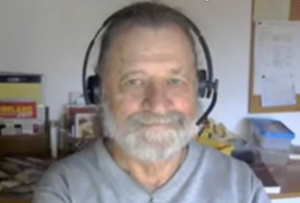Types of Supernovae – Discussion
“Before” and “After” pictures of Supernova 1987A
The above two photographs are of the same part of the sky. The photo on the right was taken in 1987 during the supernova explosion of SN 1987A, while the left hand photo was taken beforehand. Supernovae are one of the most energetic explosions in nature, equivalent to the power in a 1028megaton bomb (i.e., a few octillion nuclear warheads).
Supernovae are divided into two basic physical types:
Type Ia. These result from some binary star systems in which a carbon-oxygen white dwarf is accreting matter from a companion. (What kind of companion star is best suited to produce Type Ia supernovae is hotly debated.) In a popular scenario, so much mass piles up on the white dwarf that its core reaches a critical density of 2 x 109 g/cm3. This is enough to result in an uncontrolled fusion of carbon and oxygen, thus detonating the star.
Type II. These supernovae occur at the end of a massive star’s lifetime, when its nuclear fuel is exhausted and it is no longer supported by the release of nuclear energy. If the star’s iron core is massive enough, it will collapse and become a supernova.
However, these types of supernovae were originally classified based on the existence of hydrogen spectral lines: Type Ia spectra do not show hydrogen lines, while Type II spectra do.
Plasmoids
Plasmoids on the 100th Anniversary of Winston H. Bostick’s Birth
(L) Bostick speaking at a conference of the Schiller Institute (November 1984). © Stuart Lewis. (R) Adaptively smoothed, co-added image in the 0.4-2.5 keV bandpass of the Centaurus A jet. North is up and east is to the left. The unusual doughnut shape of the nucleus to the southwest is caused by pileup in the ACIS detector. Each of the knots previously detected by Einstein and ROSAT has been clearly resolved into several distinct subknots and enhancements embedded within diffuse extended emissions. Courtesy Kraft et al. (2002). [16: 59 Fig. 4]
Oct 25, 2016
Sixty years ago, Winston Harper Bostick found that an amorphous mass of high-velocity plasma has a natural ability to convert a large proportion of its kinetic energy into magnetic energy, contained in an organised toroidal structure.
He termed this structure a ‘plasmoid’. Bostick also showed that such magnetic plasma entities are capable of propagation across magnetic fields. Various strands of modern research support these findings. The characteristics of plasmoids become important for the study of plasma penetration of the earth’s magnetopause. And if the natural energy conversion mechanism exhibited by high-velocity plasmas can also be extended from laboratory scales to those of galactic jets, it may help to explain some puzzling aspects of the latter.
Bostick, dubbed “a man of great ‘physical intuition’”, was “a pioneer in particle physics, radar technology, fusion energy research, plasma and astrophysics” and “an innovative thinker and teacher who inspired many with his ability to give physical-geometrical descriptions to the abstract particles and forces that fill the theoretical world of physics and quantum mechanics” [1]. He was born on 5 March 1916 in Freeport, Illinois, and received his bachelor’s (1938) and doctoral degrees (1941) in physics from the University of Chicago around the time of the inception of the Manhattan Project to build an atomic bomb. Bostick’s thesis on the use of cosmic rays to generate subnuclear events for particle physics experiments was written under the direction of A. H. Compton and M. Schein. Following his graduate work, Bostick joined MIT’s Radiation Laboratory to develop new pulse transformers to generate the high voltages required by the new wartime radar systems.
After the war, Bostick continued to work at MIT on a new type of bubble chamber he had invented for particle physics measurements. He then worked with J. C. Slater on the MIT microwave linear accelerator until 1948. From 1948 to 1954, he was on the faculty of the Physics Department of Tufts University. He then took a leave of absence to work at Lawrence Livermore Laboratory on the early Controlled Thermonuclear Fusion Research (CTR) programme until 1956. In the mid-1950s, he developed a ‘plasma gun’ that accelerated bursts of atomic particles at high speeds through a magnetic field. From 1956 until 1986, Bostick was the George Meade Bond Professor at the Stevens Institute of Technology in Hoboken, New Jersey, serving as head of the Stevens Department of Physics for 12 of those years.
In the 1980s, Bostick’s work on superconductivity inspired the first of a series of seminars on physical and biological science sponsored by the Fusion Energy Foundation (FEF) and chaired by Lyndon H. La Rouche. The last such seminar was focused on developing the broader implications for the physical geometry of space-time conceived by Eugenio Beltrami, a collaborator of Riemann, whose work Bostick had first brought to the FEF’s attention in 1974. Bostick [2, 5] investigated Beltrami geometry as seen in force-free magnetic plasmas and suggested that this provided the context for realising forcefree models for the atom and its nucleus. Bostick also championed the application of the same principles of Beltrami plasma processes to astrophysics. He died on 19 January 1991 after a long battle with cancer.
Going back to 1956, a milestone in plasma physics was reached when Bostick [3] reported experimental results which showed that plasma, when created and accelerated to high velocities by a button-type pulsed source, is shaped by its own magnetic field into a compact toroidal structure [3: 292]. Terming this structure a ‘plasmoid’, Bostick was careful to distinguish his own definition of a plasmoid as “a generic term for all plasma-magnetic entities”, highly structured, from its definition as an “amorphous blob”. He subsequently clarified his definition as “a self-generating, shaped body” [4: 90] and a “force-free minimum-free-energy structure” [5: 703] taking the form of a plasma vortex.
According to Bostick, “A rather surprising result occurs when the source … is placed in vacuum (~10-5 mm Hg) in an externally applied dc magnetic field and fired across the field. The plasma apparently has no difficulty in crossing the magnetic field” [3: 292]. It “forms an ever-elongating hollow cylinder as it proceeds across the magnetic field …” [4: 90] “Subsequent investigations were to prove that the plasma crosses the magnetic field in a train of paired oppositely rotating diamagnetic vortices” [5: 703], exhibiting Beltrami geometry.
These experiments led Bostick to conclude that “nature can take the electrical energy in the plasma gun, turn it into directed kinetic energy and momentum of the plasma, and then turn a large share of that energy into rotating energy of vortices …” [5: 703] The kinetic energy of a mass of plasma is converted into magnetic energy in a self-contained structure – a plasmoid – which then acquires the ability to cross magnetic fields.
Kubes et al. [6] recently demonstrated a similar conversion effect in a laboratory zpinch. The points of maximum pinch serve to accelerate plasma axially away from the zone of maximum compression. The high-velocity plasma then forms “toroidal, helical and plasmoidal structures … within the dense plasma column” [6: 1] in the lower-pressure regions further along the axis. A z-pinch is apparently an efficient way of generating the initial high velocities which result in the formation of self-contained plasmoids by the mechanism which Bostick identified.
Plasmoid formation is now thought to underlie various phenomena in interplanetary space. For example, Draper et al. [7] described how self-contained plasmoids arise during magnetic reconnection in the earth’s magnetotail. Similarly, Gunell and colleagues [8, 9] demonstrated that plasma with an initial high velocity relative to its surroundings may penetrate the sub-solar region of the magnetopause “by expulsion of the magnetic field from the structure …” [8: 1] We relate this finding to Bostick’s notion of an initial cylinder of high-velocity plasma transforming into a self-contained diamagnetic structure.
On a larger scale, coronal mass ejections (CMEs) may take the form of ‘magnetic clouds’ [10] exhibiting the characteristics of flux ropes [11]; Eselevich & Eselevich [12] hypothesised that small CMEs represent plasmoids.
In the light of these discoveries, it is not inconceivable that humans may have witnessed the arrival and disintegration of large plasmoids from the sun into the upper atmosphere at times of solar-terrestrial crisis, when the strength of the earth’s magnetosphere may have been compromised and coronal mass ejections may have been more ‘geoeffective’. One such episode may have been the terminal stage of the last glacial period, when the earth is known to have experienced considerable geomagnetic instability and the essential themes of a global body of ‘creation myths’ seem to have emerged.
Meanwhile, extending the laboratory results to intergalactic scales may help to resolve some outstanding problems in the formation and spectral emissions from jets emitted by radio galaxies of Fanaroff-Riley type I (FR-I). Table I in the discussion of the properties of the X-ray jets in FR-I radio galaxies by Harwood & Hardcastle [13] indicates that the jets from many galaxies, including Centaurus A and Messier 87, contain small-scale features known as ‘knots’. There are a number of puzzling aspects of these knots and the spectral emissions from the jets.
Firstly, the origin of the knots in the jets is uncertain; see, e. g., [14, 15]. Kraft et al. [16] presented data from the Chandra mission which showed that the major knots in Centaurus A known from Einstein and ROSATobservations are in fact groups of smaller knots located at places of “shocks in the flow where the magnetic fields are compressed and the particles accelerated”. Apparently, these are aligned along a helical path within the main jet delineated by the diffuse X-ray and radio intensity contours.
We suggest that the knots may arise spontaneously from conversion of part of the kinetic energy of the main jet according to Bostick’s principles of plasmoid formation, reinforced by the work of Kubes et al. Alternatively, the trigger for the formation of a knot may be the development of a kink instability in the inner jet which leads to the pinching off of a self-contained entity – or plasmoid; see, e. g., [17: 204 Fig. 1] and [18: 1409 Fig. 5]. Within the small knots, the particles would necessarily still have high rotational velocities in order to conserve both the angular momentum present in the original helical jet [19] and the magnetic helicity [20], assuming that the field is frozen into the plasma in accordance with the usual magnetohydrodynamic assumptions. Therefore, the plasmoidal knots may mirror the well-known behaviour of spherical tokomak plasma confinement devices, in which high plasma temperatures are generated and particles occasionally escape from the confinement, thus allowing energy extraction from the devices.
Secondly, the amplification of the magnetic field necessary to explain the observed synchrotron radiation emanating from the knots requires an explanation. De Young [21] suggested a model of turbulent amplification driven by the kinetic energy of the jet. However, this mechanism requires c. 1,000,000 to 100,000,000 years to produce sufficient amplification of the field by equipartition with the kinetic energy in order to explain the radio lobe sources; presumably, an even longer period would be required in order to amplify the field to strengths necessary to explain the X-ray emissions. In contrast, formation of a plasmoid by the Bostick mechanism would also convert jet kinetic energy into magnetic energy in a knot, but can be expected to be almost instantaneous by comparison. The process of knot formation may also occur on scales below the observable resolution. Kraftet al. [16] suggested that this may explain the diffuse X-ray emission of the jet. We suggest that it may also help to account for the regular field structure on a scale of 1 kpc in the radio lobes [21].
Finally, second-order Fermi acceleration of particles to synchrotron-producing energies of ±10 to 100 TeV is assumed to occur at the turbulent boundary of the main jet [22 citing 21], or in multiple diffusions across shocks within the knots. Similar turbulent effects can be expected to occur at the boundary of a plasmoid forming a knot. Analogies with spheromak fusion devices suggest that highly energetic particles on field lines may also periodically escape from a plasmoid knot, thereby providing a direct source of high-energy particles without the need for Fermi acceleration in boundary turbulence or by repeated diffusion across shocks.
To summarise, in 1956 Bostick [3] discovered the natural ability of high-velocity plasma to convert kinetic energy into magnetic energy in a self-contained structure called a ‘plasmoid’, which allows the plasma to cross magnetic field lines. These and subsequent discoveries by Bostick have been shown to be relevant to present researches ranging from laboratory z-pinches to the solar system. Scaling up this behaviour to galactic dimensions may help to explain puzzling features in knotty jets emanating from FR-I galaxies, including the formation of knots, the localised amplification of the magnetic field and the acceleration of particles to TeV energies observed in galactic jets. The 100th anniversary of Bostick’s birth would provide an opportune moment to investigate these suggestions in greater detail.
Robert J. Johnson & Marinus Anthony van der Sluijs
Paul A. LaViolette – The Cosmic Ether: Introduction to Subquantum Kinetics
Richard Moore : A Field Model of Mind
a speculative inquiry into the nature of consciousness

Materialism and consciousness
At the very core of mainstream science is the assumption that the universe is entirely materialistic. Consciousness emerges as a function of the electrial activity of a brain, when a brain evolves to a sufficient level of complexity. There is no meaning or purpose to life, apart from the imaginings of humans and their religions – there is only the more or less random evolution of material configurations. Richard Dawkins is the most vocal and prolific expounder of this materialist perspective, a perspective that mainstream scientists subscribe to without ever thinking to question it.
There is another model of consciousness that says consciousness is not embodied in the brain. Rather our minds exist apart from our brains, and outside the domain of physics. The function of the brain, in this model, is to serve as a kind of interface module, enabling the mind to interact with the five senses and the body. This we can call the metaphysical model of consciousness.
Evidence for the metaphysical model comes in the form of ‘unexplainable’ experiences. An unconscious patient, registering no electrical brain activity at all during a critical operation, reports later that he observed the operation from the ceiling, and is able to describe specific things that happened during the operation. Or someone has a near-death experience, and reports certain kinds of experiences that have also been reported in other near-death cases.
Professor Brian Josephson – CymaScope – Royal Society of Medicine – John Reid
Professor Brian Josephson, Nobel Laureate, featured the CymaScope in his lecture at the Royal Society of Medicine
 On July 14th 2018 Professor Brian Josephson presented a lecture at the Royal Society of Medicine. The conference, titled New Horizons in Water Science, hosted many esteemed speakers including a second Nobel Laureate, Professor Luc Montagnier, Professor Gerald Pollack, Professor Vladimir Voeikov, Professor Alexander Konovalov and Dr Robert Verkerk.
On July 14th 2018 Professor Brian Josephson presented a lecture at the Royal Society of Medicine. The conference, titled New Horizons in Water Science, hosted many esteemed speakers including a second Nobel Laureate, Professor Luc Montagnier, Professor Gerald Pollack, Professor Vladimir Voeikov, Professor Alexander Konovalov and Dr Robert Verkerk.
Brian Josephson was professor of physics at the Cavendish Laboratory from 1974 until his retirement in 2007. He is currently emeritus professor of physics at the University of Cambridge, a Fellow of Trinity College, Cambridge, and a Fellow of the Royal Society. In his first contact with John Stuart Reid, he said of the CymaScope instrument, “Having watched one of your lectures I think your (re) discovery is going to be of great importance to the future of physics”.
In his lecture at the Royal Society of Medicine, on the subject of the memory of water and ordering processes in general, Professor Josephson presented two CymaScope videos, one of which concerned the memory of water. He said, “The idea that water can have a memory can be readily dismissed on the basis of any of a number of easily understood invalid arguments” and then proceeded to explain to the audience why these arguments are invalid. To support his presentation he included a CymaScope video that appears to show water’s ability to remember a sonic input frequency injected into the CymaScope’s visualizing cuvette, after the frequency has been removed. He also presented a video showing the sound of a cancer cell made visible, part of a research project in collaboration between Professor Sungchul Ji of Rutgers University, Dr. Ryan Stables of Birmingham University and the CymaScope lab.
Professor Josephson said, “Water exhibits remarkable structural and dynamic properties, including the ‘biological signal’ revealed by the investigations of Beneviste and Montagnier and the complex acoustically-induced structures in water revealed by the CymaScope. Organised dynamical behaviour is more the province of biology than of physics and will require different tools of investigation than are standard in physics. The CymaScope may be one such tool. It is not just a new scientific instrument but new science as well and I suspect a new field of maths.”
John Stuart Reid said, “We are honoured that Professor Josephson discussed the CymaScope in his lecture at the New Horizons in Water Science conference. We believe that the CymaScope instrument has the potential to open new horizons in physics, biology, homeopathy, musciology, phonology and many other areas of scientific study. ”
Professor Josephson’s lecture can be viewed at this link and includes a clip from Dr Gary Buchanan’s Beethoven/Moonlight Sonata video.
The Detection of Rossby-like Waves on the Sun
From:
- Scott W. McIntosh
- William J. Cramer
- Manuel Pichardo Marcano
- Robert J. Leamon
-
Nature Astronomy volume1, Article number: 0086 (2017)
doi:10.1038/s41550-017-0086
- Received:
- Accepted:
- Published:
Abstract
Rossby waves are a type of global-scale wave that develops in planetary atmospheres, driven by the planet’s rotation1. They propagate westward owing to the Coriolis force, and their characterization enables more precise forecasting of weather on Earth2,3. Despite the massive reservoir of rotational energy available in the Sun’s interior and decades of observational investigation, their solar analogue defies unambiguous identification4,
Coronal brightpoints (BPs) permit the tracking of the magnetic activity bands of the 22-year magnetic cycle of the Sun8. These activity bands in each solar hemisphere undergo significant quasi-annual instability, which results in episodes of intensified space weather6. The nature of the instability on the bands is unknown, but has been linked to the existence of magnetic Rossby waves in the solar interior5. We use our BP detection algorithm9 on a series of coronal images taken by the Extreme-Ultraviolet Imager (EUVI) instruments10 on the twin STEREO spacecraft, and by the Atmospheric Imaging Assembly (AIA) instrument11on the SDO spacecraft, in the 19.5- and 19.3-nm channels, respectively, from 1 June 2010 to 31 May 2013. During this time period, the orbits of these three spacecraft created an opportunity to explore global-scale solar phenomena. In concert, the trio of spacecraft provided the first complete observational coverage of the Sun’s corona, slowly drifting apart from the Sun–Earth line until STEREO-Behind lost communication with the Earth in mid-2014.


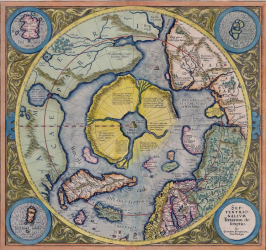
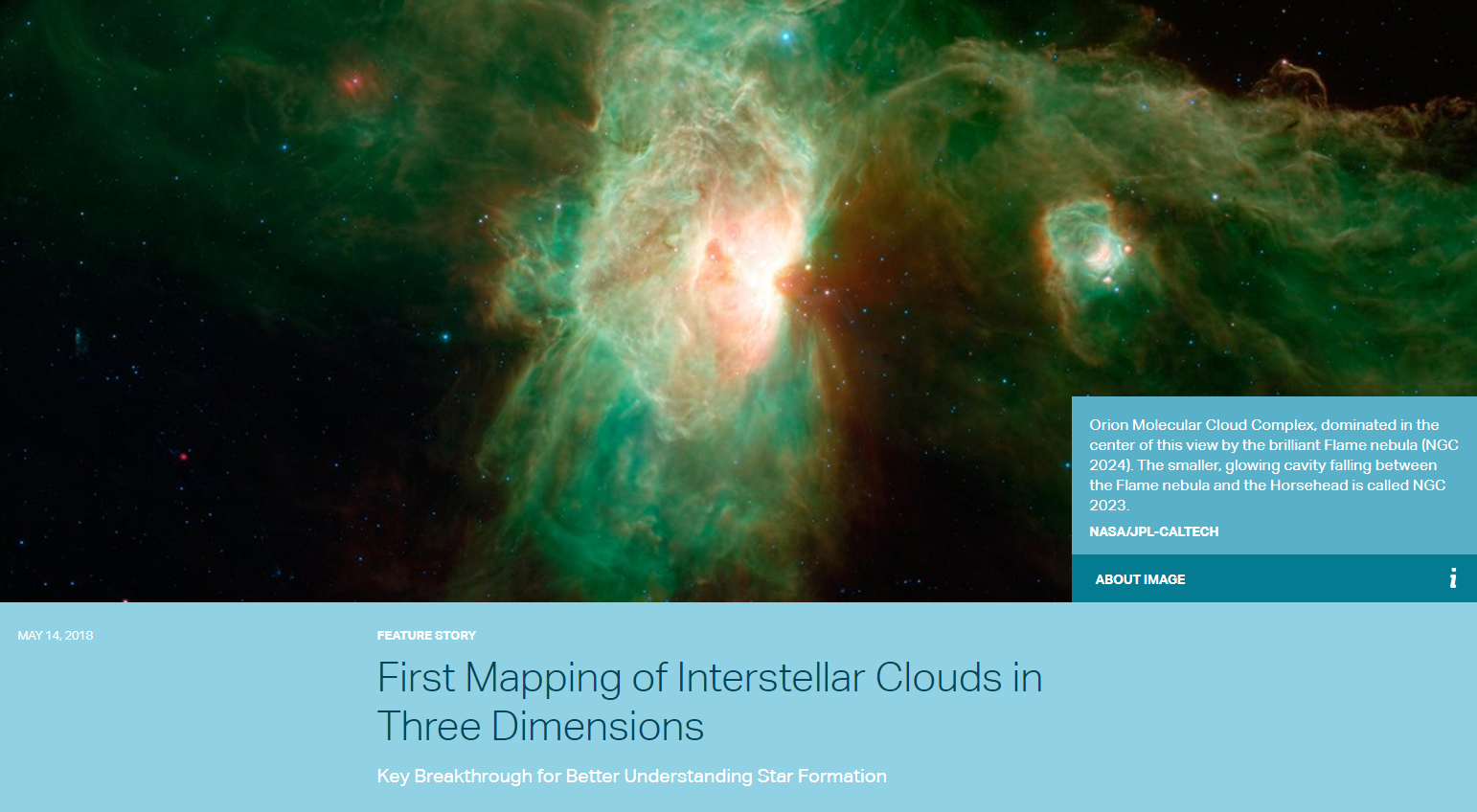

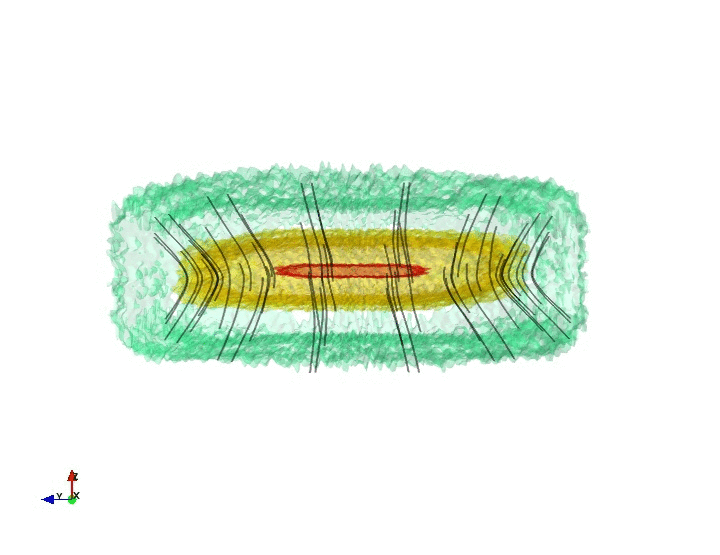



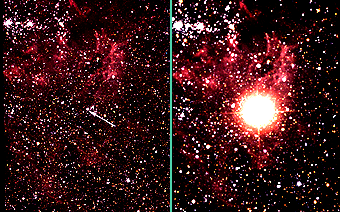
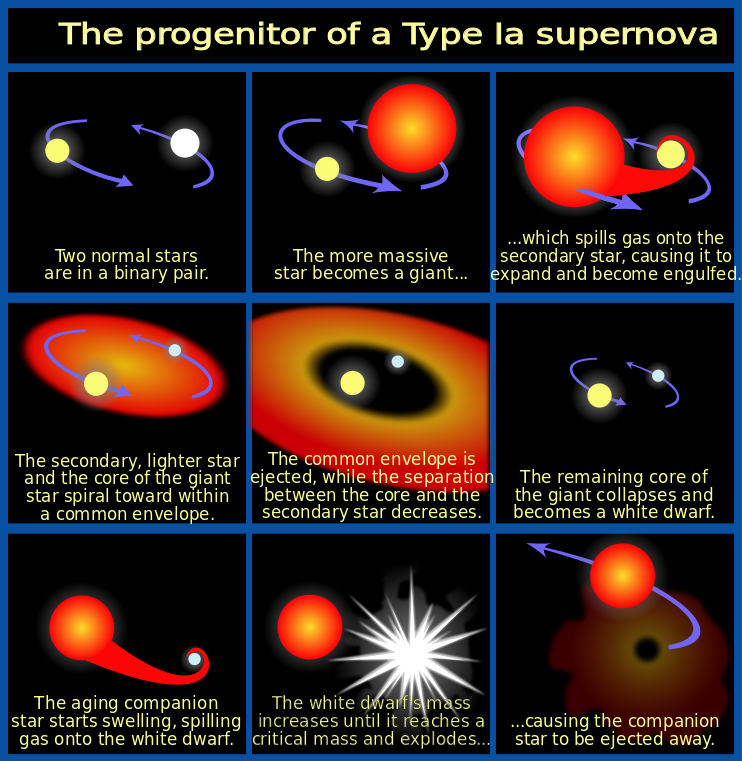



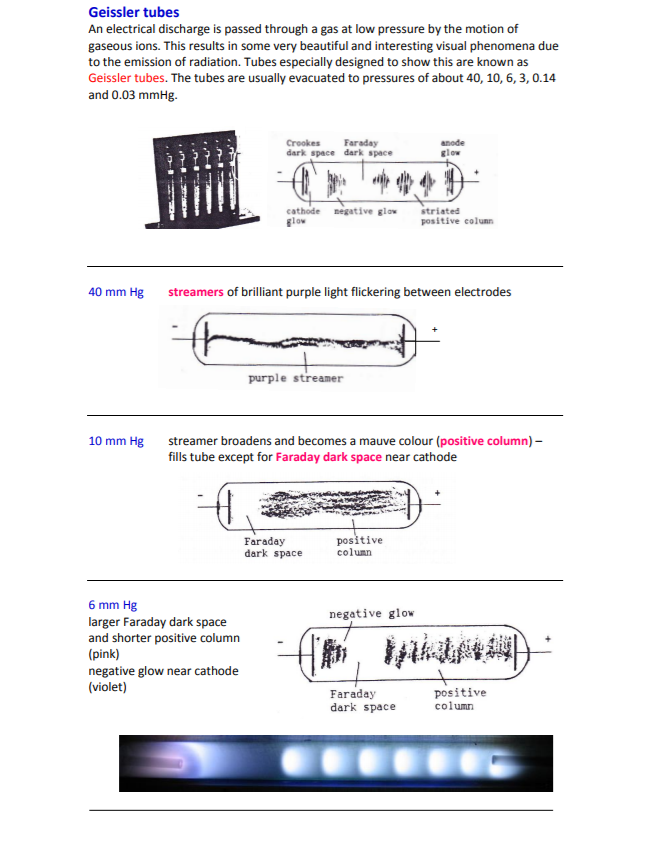


![(L) Bostick speaking at a conference of the Schiller Institute (November 1984). © Stuart Lewis. (R) Adaptively smoothed, co-added image in the 0.4-2.5 keV bandpass of the Centaurus A jet. North is up and east is to the left. The unusual doughnut shape of the nucleus to the southwest is caused by pileup in the ACIS detector. Each of the knots previously detected by Einstein and ROSAT has been clearly resolved into several distinct subknots and enhancements embedded within diffuse extended emissions. Courtesy Kraft et al. (2002). [16: 59 Fig. 4]](https://www.thunderbolts.info/wp/wp-content/uploads/2016/03/Untitled-550x226.jpg)






